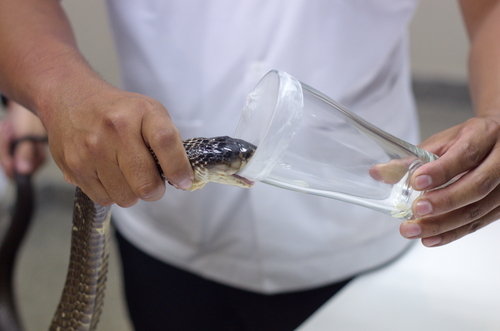Rattlesnake venom may yield antiviral therapies to combat Hepatitis C
M3 Global Newsdesk Mar 22, 2018
New studies conducted on the South American rattlesnake has shown that the venom can be very useful in the development of anti-viral therapies against diseases like Hepatitis C, and other infectious diseases like dengue, measles, and HIV infections.

Toxins isolated from the venom of the South American rattlesnake show multiple effects on the lifecycle of the hepatitis C virus (HCV), suggesting that these compounds might be developed as a treatment for the virus, according to results of a study published in the journal PLoS ONE.
“Current therapy is expensive, presents additional side effects, and viral resistance has been described. Therefore, studies for developing more efficient antivirals against HCV are needed,” wrote researchers led by Ana Carolina Gomes Jardim, PhD, and Paula Rahal, PhD, of the Genomics Study Laboratory, São Paulo State University, São Paulo, Brazil.
In other studies, compounds isolated from snake venoms have shown antiviral activity against a number of viruses, including dengue, yellow fever, measles, and human immunodeficiency viruses. “Therefore, toxins isolated from venomous snakes may provide an alternative approach for the development of new antivirals,” the authors noted.
Venom vs virus
For this study, the researchers investigated three compounds isolated from the venom of the South American rattlesnake (Crotalus durissus terrificus): the crotoxin protein complex and its subunits crotapotin and phospholipase A2.
In a series of in vitro experiments with cultured human cells infected with HCV, the researchers tested the antiviral capability of crotapotin and phospholipase A2 both separately and together in the crotoxin protein complex. They added the toxins to the cells at various time points to evaluate the effects at different stages of the viral life cycle.
“This virus invades the human host cell to replicate, producing new viral particles. Inside the host cell, the virus produces a complementary strand of RNA, from which molecules of viral genome will emerge to constitute the new particles,” Dr. Gomes Jardim explained. “Our research showed that phospholipase can intercalate into double-stranded RNA, a virus replication intermediate, inhibiting the production of new viral particles. Intercalation reduced these by 86% compared with their production in the absence of phospholipase,” she said.
When the researchers performed the same experiment using crotoxin, production of viral particles fell 58%. Crotapotin demonstrated no effect on the double-stranded RNA.
Fangtastic future therapies
Next, the researchers investigated whether the toxins could block the virus’s entry into cultured human cells. Results showed that phospholipase A2 blocked 97% of HCV entry and crotoxin blocked 85%. Again, crotapotin showed no inhibitory effect on viral entry. However, crotapotin did affect another stage of the virus’s life cycle: HCV release. The toxin reduced the release of new viral particles from cells by 78%. Crotoxin decreased HCV release by 50%, while phospholipase A2 had no effect on viral release.
The results of the experiments show that phospholipase A2 and crotapotin produced better results when used separately than when used together. Indeed, the viricidal effect of the crotoxin protein complex is probably due to the inclusion of phospholipase A2 in its makeup, the researchers noted.
This study was supported by the Royal Society’s Newton Fund, the Minas Gerais State Agency for Research and Development, the São Paulo Research Foundation, Coordination for the Improvement of Higher Education Personnel, and the National Council for Scientific & Technological Development.
This story submitted by John Murphy, is part of our Global Content Initiative, where we will feature selected stories from our Global network which we believe would be most useful and informative to our doctor members.
-
Exclusive Write-ups & Webinars by KOLs
-
Daily Quiz by specialty
-
Paid Market Research Surveys
-
Case discussions, News & Journals' summaries